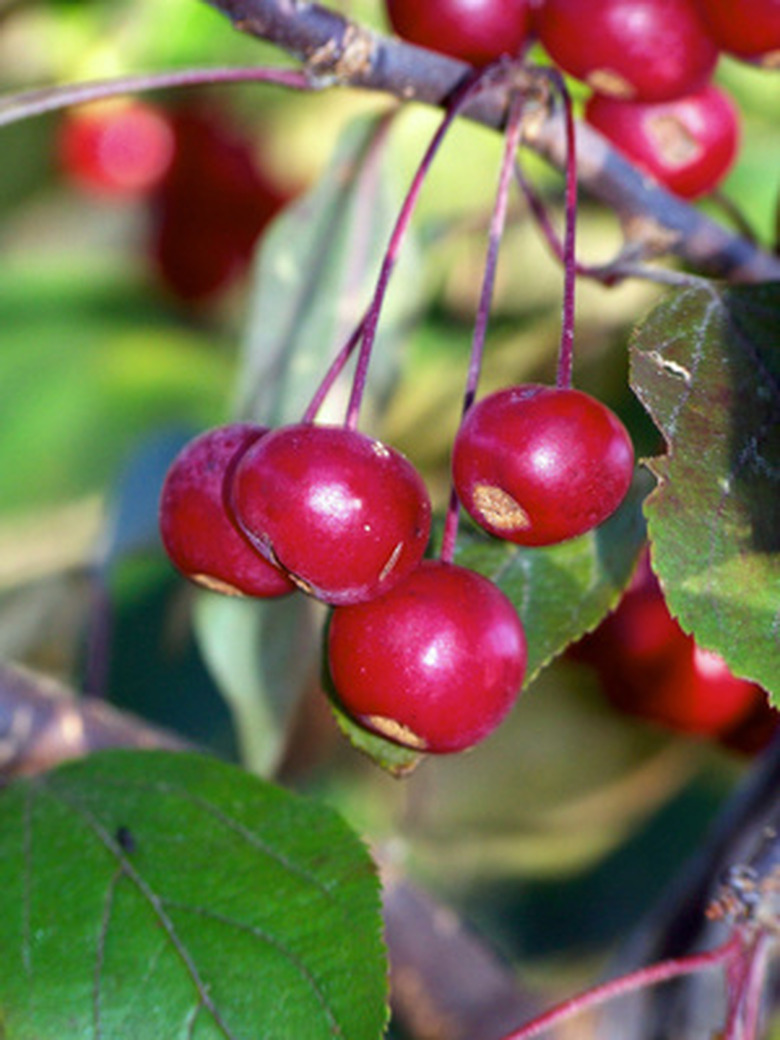How To Prune Malus Tina Crabapple Trees
Things Needed
- Anvil pruners
- Lopping shears
- Disinfectant spray
The 'Tina' crabapple (Malus 'Tina') features showy blossoms in the springtime and small red fruits in the autumn that attract birds. The tree's flowers range from white to deep red. This dwarf flowering crabapple reaches 4 to 5 feet in height and is rated one of the top 10 crabapples to grow by the Brooklyn Botanic Garden. Prune 'Tina' crabapples to control their size and keep them healthy, working in the late winter to early spring before the trees leaf out.
Step 1
Check your 'Tina' crabapple for dead, diseased or damaged branches. Diseased and damaged wood can be discolored, bruised or wounded, show oozing sap, or appear otherwise different from healthy branches nearby. Dead wood feels hollow. Removing this wood helps keep your crabapple tree healthy.
- The 'Tina' crabapple (Malus 'Tina') features showy blossoms in the springtime and small red fruits in the autumn that attract birds.
- Prune 'Tina' crabapples to control their size and keep them healthy, working in the late winter to early spring before the trees leaf out.
Step 2
Snip off dead, diseased or damaged branches at their base or cut back to a healthy lateral branch. After every cut, spritz your pruning tools with disinfectant so you don't accidentally spread disease while pruning.
Step 3
Clip off suckers growing along the tree's trunk. These fast growing vegetative shoots sap energy from the crabapple.
Step 4
Prune away branches that crisscross or compress other branches, since this puts pressure on the tree and will eventually cause damage. Also remove branches that grow too close together, since this crowds the tree and cuts down on air circulation. Eliminate the weaker, thinner branch.
- Snip off dead, diseased or damaged branches at their base or cut back to a healthy lateral branch.
- Also remove branches that grow too close together, since this crowds the tree and cuts down on air circulation.
Step 5
Remove offshoots from branches that grow straight up, since these interfere with the tree's proper development.
Step 6
Clip back the tips of branches if you feel they've grown too long. Cut back to a lateral branch or a node of swollen tissue, making the cut at a 45-degree angle.
Tip
Use lopping shears for cuts thicker than 1 inch in diameter and anvil pruners for thinner cuts.
